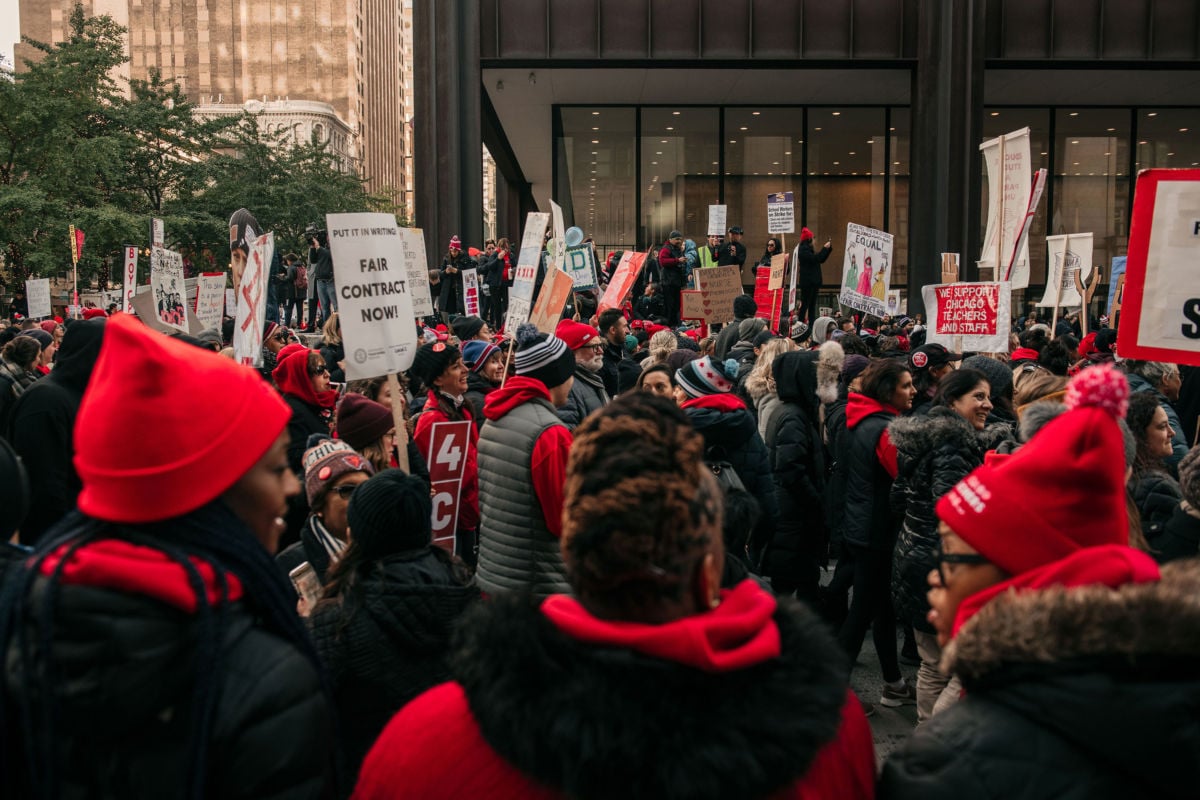Chicago educators took to the picket lines after months of contract negotiations with Mayor Lori Lightfoot’s bargaining team. The new mayor ran on a platform that included small class sizes, additional care workers and fully funding public schools. However, Mayor Lightfoot kept Rahm Emanuel’s status quo by retaining the same counsel as Emanuel and Mayor Richard M. Daley, and the same schools chief as Emanuel. The new mayor campaigned on improving schools — but now she’s fighting against the union tooth-and-nail to retain an untenable status quo.
As a teacher employed by the Chicago Public Schools, I know how indefensible the current situation is: We have a district where nurses are spread between multiple schools, counselors have caseloads of students nearing 1,000, and 45 students cram into a single classroom in some schools. This has been the status quo for far too long.
The Chicago Teachers Union’s demands for this contract are not typical. We are not only negotiating over pay. We are also seeking to right the historical wrongs in the Chicago Public Schools and the communities we serve. That is why we are pushing for more counselors, nurses, librarians and social workers in every school.
We are also fighting for housing justice, a problem as old as the city itself. Chicago is a highly segregated city, and it was engineered that way. One clear example of this was depicted in the 1971 biography of the first Mayor Richard Daley (Richard M. Daley’s father), Boss, which describes how the clouted Mayor shifted the plan for the Kennedy Expressway so that it would divide Daley’s white enclave of Bridgeport from Chicago’s “Black Belt” – the cluster of neighborhoods on Chicago’s South and West Sides that are predominately Black. These neighborhoods have been rife with disinvestment for decades.
I began my teaching career in 2003 at Wendell Phillips, a high school in the rapidly-gentrifying Bronzeville neighborhood, which is located within the “Black Belt.” At that time the school was already nearly a century old. It was the first predominantly Black high school in Chicago. The first-floor hall was adorned with rows of noted alumni including Nat “King” Cole, Sam Cooke and Herbie Hancock.
For decades, Wendell Phillips serviced the families in high-rise and low-rise public housing in the immediate neighborhood. When I started in 2003, the Chicago Housing Authority was in the midst of what it called its “Plan for Transformation,” a program through which existing public housing was razed and replaced with “mixed-income developments.” This meant that each week at Wendell Phillips we would find out that more of our students were homeless or living in transitional situations. The school was the only community many students had after the demolition of three public housing developments: the Ida B. Wells Homes, Stateway Gardens and the Robert Taylor Homes. I had students who would travel more than an hour to get to school in order to stay in their school communities.
At the same time, the Chicago Public Schools launched its “Renaissance 2010” program. This was a plan to close so-called “failing schools” and replace them with 100 new “small schools.” The program included “turnarounds” — in which every worker in a school building is fired and replaced with brand new staff — as well as charter schools and other untested education reforms.
The Renaissance 2010 program was a boon to the local nonprofit industrial complex, making every half-baked idea suddenly highly profitable. The targeted schools, like Phillips, were in gentrifying neighborhoods. The program ultimately failed, and schools were re-combined into their original forms or closed entirely.
Chicago’s segregated landscape was first carved out through the process of redlining — the practice of denying loans to residents in particular areas of the city. In Chicago, these were the south and west sides of the city, the so-called “Black Belt.” These communities were far from central business districts. In 2019, some of these areas have now become ripe for gentrification.
Years of divestment in schools and communities have gotten us to the point where we must strike. The school board and mayor aren’t willing to fix the long-term problems on their own, so we as educators have taken up the mantle. But of course, we hope that the strike will be over soon, with our demands met, so we can return to what we do best — teach.
Chicago teachers have been cited as the inspiration of the so-called “Red State Strikes” — the series of unauthorized wildcat strikes that took over the south and southwest. They have repeatedly fought for their students and won. Inspiration is contagious, and Chicago has caught the bug once again. We will never stop fighting for the schools our students deserve.
Join us in defending the truth before it’s too late
The future of independent journalism is uncertain, and the consequences of losing it are too grave to ignore. To ensure Truthout remains safe, strong, and free, we need to raise $46,000 in the next 7 days. Every dollar raised goes directly toward the costs of producing news you can trust.
Please give what you can — because by supporting us with a tax-deductible donation, you’re not just preserving a source of news, you’re helping to safeguard what’s left of our democracy.
